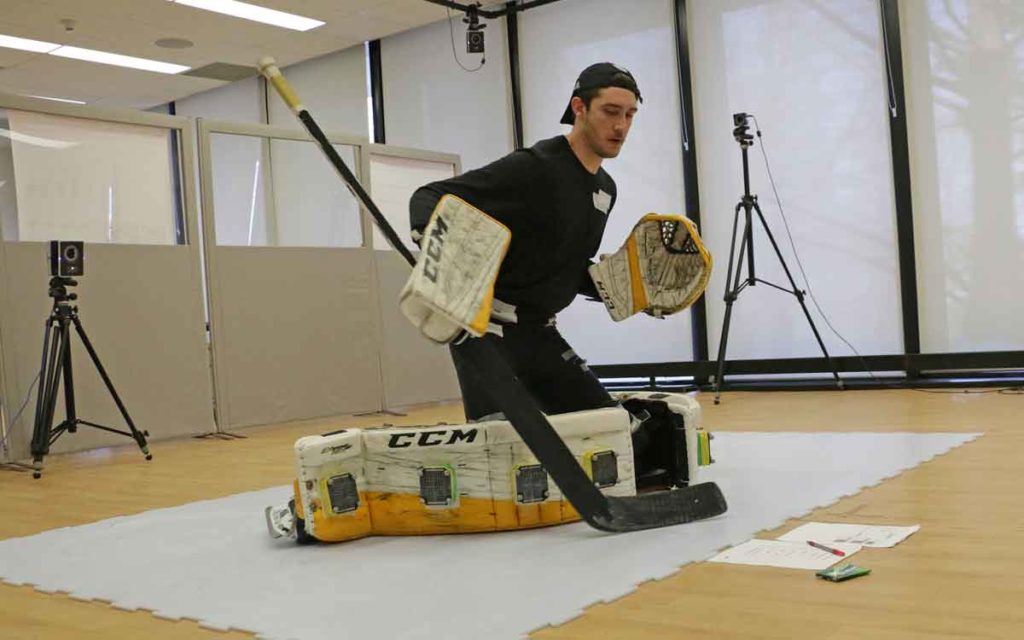
Motion capture cameras film Brock University Master of Applied Health Sciences student Colin Dunne as he performs a goaltending move as part of a kinesiology research study.
The position of hockey goalie has changed dramatically over the years from the modernization of the equipment making it lighter and sleeker, to the physical style of play. Now, thanks to research conducted at Brock University, hockey goaltenders could have another new competitive advantage in stopping the puck.
Brock professor of Kinesiology Kelly Lockwood and Master of Applied Health Sciences student Colin Dunne have found an adjustment to the goalie skate that significantly increases the speed at which a goaltender can drop into the butterfly position to make a save.
Their study, completed as part of Dunne’s master’s thesis, revealed how a small shift in blade alignment positioned on the bottom of the skate helped the execution of the butterfly drop, a frequent movement among goalies.
“Hockey is a game of seconds,” said Lockwood. “Small tweaks in equipment can seem insignificant out of context, but in the high-speed sport of hockey — especially the execution of save techniques — it can mean the difference between a save or a goal.”
In today’s game goaltenders almost always use the butterfly technique. Dropping to their knees with their goalie pads flared to the sides and flush with the ice, their body position resembles the shape of a butterfly and eliminates the most-likely targets for the puck to slide through.
Dunne, who has played the goalie position for many years at the minor pro and senior levels, said being able to drop down to the butterfly position faster is a big advantage between the pipes.
Over a three-week span, Lockwood and Dunne conducted trials on an xHockeyProducts synthetic ice surface located in Lockwood’s On-Ice Performance Lab and in Brock’s Neuromuscular Mechanics and Ergonomics Lab run by Associate Professor of Kinesiology Michael Holmes.
Using 3D motion capture technology and wireless in-skate pressure insoles, they measured kinematics and kinetics of two goaltender-specific movement patterns, butterfly drop to recovery and the lateral butterfly slide to recovery. The duo investigated three blade alignments (neutral, medial and lateral) mounted on customized goalie skates provided by True Hockey while comparing drop velocity and plantar pressure.
They found significant improvements to average butterfly drop velocity when they mounted the blade medially, meaning closer to the inside or big toe side of the foot.
“These results support our biomechanical understanding of how shifting the blade to the medial aspect of the boot would position the athlete to drop into the butterfly position quicker,” said Dunne, who plans to complete his PhD under the supervision of Lockwood and Holmes, further investigating the contribution of equipment to performance in hockey as well as other on-ice sports.
The goaltending study is in the process of being published in a sports engineering journal and is being distributed through industry magazines and newsletters, such as the Society of Professional Hockey Equipment Managers. The result has been significant interest from the hockey world.
“We anticipate feedback to be forthcoming once the results hit the ice,” Lockwood said.




















